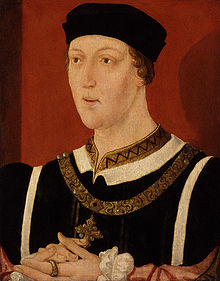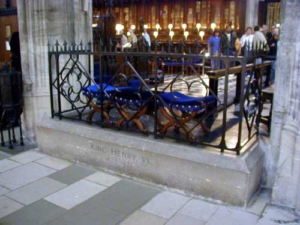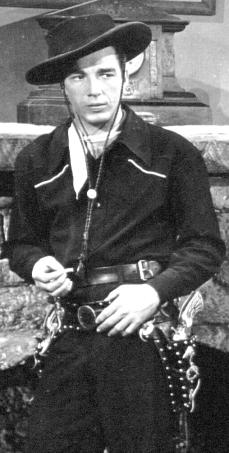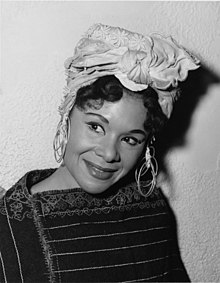 On this day in 1471, King of England from 1422 to 1461 and again from 1470 to 1471, and disputed King of France from 1422 to 1453, Henry VI died in the Wakefield Tower of the Tower of London at the age of 49 of unknown cause. Born on 6 December 1421 at Windsor Castle. Henry was the only child and heir of King Henry V. He succeeded to the throne as King of England on his father’s death on 31 August 1422 at the age of nine months: the youngest person ever to succeed to the English throne. Two months later, on 21 October 1422, he became titular King of France upon his grandfather Charles VI‘s death in accordance with the Treaty of Troyes of 1420. His mother, Catherine of Valois, was then 20 years old. As Charles VI’s daughter, she was viewed with considerable suspicion by English nobles and prevented from playing a full role in her son’s upbringing. Contemporaneous accounts described him as peaceful and pious, not suited for the dynastic wars, such as the Wars of the Roses, which commenced during his reign. His periods of insanity and his inherent benevolence eventually required his wife, Margaret of Anjou, to assume control of his kingdom, which contributed to his own downfall, the collapse of the House of Lancaster, and the rise of the House of York. After a violent struggle between the houses of Lancaster and York, during which the Duke of York was killed by Margaret’s forces on 30 December 1460, Henry was deposed and imprisoned on 4 March 1461 by the Duke of York’s son, Edward of York, who became king, as Edward IV. By this point, Henry was suffering such a bout of madness that he was apparently laughing and singing while the Second Battle of St Albans raged, which secured his release. But Edward was still able to take the throne, though he failed to capture Henry and his queen, who fled to Scotland. During the first period of Edward IV’s reign, Lancastrian resistance continued mainly under the leadership of Queen Margaret and the few nobles still loyal to her in the northern counties of England and Wales. Henry, who had been safely hidden by Lancastrian allies in Scotland, Northumberland and Yorkshire was captured by King Edward in 1465 and subsequently held captive in the Tower of London. Queen Margaret, exiled in Scotland and later in France, was determined to win back the throne on behalf of her husband and son. By herself, there was little she could do. However, eventually Edward IV had a falling-out with two of his main supporters: Richard Neville, Earl of Warwick, and his own younger brother George, Duke of Clarence. At the urging of King Louis XI of France they formed a secret alliance with Margaret. After marrying his daughter to Henry and Margaret’s son, Edward of Westminster, Warwick returned to England, forced Edward IV into exile, and restored Henry VI to the throne on 30 October 1470. However, by this time, years in hiding followed by years in captivity had taken their toll on Henry. Warwick and Clarence effectively ruled in his name. Henry’s return to the throne lasted less than six months. Warwick soon overreached himself by declaring war on Burgundy, whose ruler responded by giving Edward IV the assistance he needed to win back his throne by force. Edward IV returned to England in early 1471, after which he was reconciled with Clarence and killed Warwick at the Battle of Barnet. The Yorkists won a final decisive victory at the Battle of Tewkesbury on 4 May 1471, where Henry’s son Edward was killed. Henry may have been murdered upon the orders of Edward IV.
On this day in 1471, King of England from 1422 to 1461 and again from 1470 to 1471, and disputed King of France from 1422 to 1453, Henry VI died in the Wakefield Tower of the Tower of London at the age of 49 of unknown cause. Born on 6 December 1421 at Windsor Castle. Henry was the only child and heir of King Henry V. He succeeded to the throne as King of England on his father’s death on 31 August 1422 at the age of nine months: the youngest person ever to succeed to the English throne. Two months later, on 21 October 1422, he became titular King of France upon his grandfather Charles VI‘s death in accordance with the Treaty of Troyes of 1420. His mother, Catherine of Valois, was then 20 years old. As Charles VI’s daughter, she was viewed with considerable suspicion by English nobles and prevented from playing a full role in her son’s upbringing. Contemporaneous accounts described him as peaceful and pious, not suited for the dynastic wars, such as the Wars of the Roses, which commenced during his reign. His periods of insanity and his inherent benevolence eventually required his wife, Margaret of Anjou, to assume control of his kingdom, which contributed to his own downfall, the collapse of the House of Lancaster, and the rise of the House of York. After a violent struggle between the houses of Lancaster and York, during which the Duke of York was killed by Margaret’s forces on 30 December 1460, Henry was deposed and imprisoned on 4 March 1461 by the Duke of York’s son, Edward of York, who became king, as Edward IV. By this point, Henry was suffering such a bout of madness that he was apparently laughing and singing while the Second Battle of St Albans raged, which secured his release. But Edward was still able to take the throne, though he failed to capture Henry and his queen, who fled to Scotland. During the first period of Edward IV’s reign, Lancastrian resistance continued mainly under the leadership of Queen Margaret and the few nobles still loyal to her in the northern counties of England and Wales. Henry, who had been safely hidden by Lancastrian allies in Scotland, Northumberland and Yorkshire was captured by King Edward in 1465 and subsequently held captive in the Tower of London. Queen Margaret, exiled in Scotland and later in France, was determined to win back the throne on behalf of her husband and son. By herself, there was little she could do. However, eventually Edward IV had a falling-out with two of his main supporters: Richard Neville, Earl of Warwick, and his own younger brother George, Duke of Clarence. At the urging of King Louis XI of France they formed a secret alliance with Margaret. After marrying his daughter to Henry and Margaret’s son, Edward of Westminster, Warwick returned to England, forced Edward IV into exile, and restored Henry VI to the throne on 30 October 1470. However, by this time, years in hiding followed by years in captivity had taken their toll on Henry. Warwick and Clarence effectively ruled in his name. Henry’s return to the throne lasted less than six months. Warwick soon overreached himself by declaring war on Burgundy, whose ruler responded by giving Edward IV the assistance he needed to win back his throne by force. Edward IV returned to England in early 1471, after which he was reconciled with Clarence and killed Warwick at the Battle of Barnet. The Yorkists won a final decisive victory at the Battle of Tewkesbury on 4 May 1471, where Henry’s son Edward was killed. Henry may have been murdered upon the orders of Edward IV.
 The Final Footprint – Henry VI was originally buried in Chertsey Abbey; then, in 1485, his body was moved to St George’s Chapel, Windsor Castle, by Richard III. In 1590 William Shakespeare wrote a trilogy of plays about the life of Henry VI: Henry VI, Part 1, Henry VI, Part 2, and Henry VI, Part 3. His dead body and his ghost also appear in Richard III. Shakespeare’s portrayal of Henry is notable in that it does not mention the King’s madness. This is considered to have been a politically-advisable move so as to not risk offending Elizabeth I whose family was descended from Henry’s Lancastrian family. Instead Henry is portrayed as a pious and peaceful man ill-suited to the crown. He spends most of his time in contemplation of the Bible and expressing his wish to be anyone other than a king. Shakespeare’s Henry is weak-willed and easily influenced allowing his policies to be led by Margaret and her allies, and being unable to defend himself against York’s claim to the throne. Other notable final footprints at St. George’s Chapel include: Edward IV, Edward VII, Jane Seymour, Henry VIII, Charles I, George III, George IV, William IV, and George V.
The Final Footprint – Henry VI was originally buried in Chertsey Abbey; then, in 1485, his body was moved to St George’s Chapel, Windsor Castle, by Richard III. In 1590 William Shakespeare wrote a trilogy of plays about the life of Henry VI: Henry VI, Part 1, Henry VI, Part 2, and Henry VI, Part 3. His dead body and his ghost also appear in Richard III. Shakespeare’s portrayal of Henry is notable in that it does not mention the King’s madness. This is considered to have been a politically-advisable move so as to not risk offending Elizabeth I whose family was descended from Henry’s Lancastrian family. Instead Henry is portrayed as a pious and peaceful man ill-suited to the crown. He spends most of his time in contemplation of the Bible and expressing his wish to be anyone other than a king. Shakespeare’s Henry is weak-willed and easily influenced allowing his policies to be led by Margaret and her allies, and being unable to defend himself against York’s claim to the throne. Other notable final footprints at St. George’s Chapel include: Edward IV, Edward VII, Jane Seymour, Henry VIII, Charles I, George III, George IV, William IV, and George V.
#RIP #OTD in 1935 settlement activist, reformer, social worker, sociologist, public administrator, philosopher, author, co-founder of the ACLU, Jane Addams died in Chicago, aged 74. Cedarville, Cemetery, Cedarville, Illinois
#RIP #OTD 1952 actor (Four Daughters, Body and Soul, The Postman Always Rings Twice, Gentleman’s Agreement) John Garfield died from a heart attack in his sleep in New York City, aged 39. Westchester Hills Cemetery in Hastings-on-Hudson, New York
 On this day in 1996, western motion picture star Lash LaRue died of emphysema at St Joseph’s Hospital in Burbank, California at the age of 74. Born Alfred LaRue on 14 June 1921 in Gretna in suburban Jefferson Parish near New Orleans, Louisiana, of Cajun ancestry. Known for his exceptional skill with a bull whip which he used to bring down the bad guys in his movies; thus his nickname, Lash. LaRue taught Harrison Ford how to use a whip for the Indiana Jones movies.
On this day in 1996, western motion picture star Lash LaRue died of emphysema at St Joseph’s Hospital in Burbank, California at the age of 74. Born Alfred LaRue on 14 June 1921 in Gretna in suburban Jefferson Parish near New Orleans, Louisiana, of Cajun ancestry. Known for his exceptional skill with a bull whip which he used to bring down the bad guys in his movies; thus his nickname, Lash. LaRue taught Harrison Ford how to use a whip for the Indiana Jones movies.
The Final Footprint – LaRue was cremated at Forest Lawn Memorial Park in Glendale, California. Interesting cultural reference: In Quentin Tarantino’s film Pulp Fiction, the character Winston Wolf (Harvey Keitel) refers to Vincent Vega (John Travolta) as Lash LaRue and asks if he can keep his spurs from jingling and jangling.
| Katherine Dunham | |
|---|---|
 in 1956 by Phyllis twachtman |
|

In Tropical Review, Martin Beck Theatre by Alfredo valenti
On this day in 2006, dancer, choreographer, author, educator, and social activist Katherine Dunham died in New York City at the age of 96. Born Katherine Mary Dunham on June 22, 1909 in Chicago. Dunham had one of the most successful dance careers in American and European theater of the 20th century, and directed her own dance company for many years. She has been called the “matriarch and queen mother of black dance.”
While a student at the University of Chicago, Dunham took leave and went to the Caribbean to study dance and ethnography. She later returned to graduate and submitted a master’s thesis in anthropology. She did not complete the other requirements for the degree, however, and realized that her professional calling was performance.
At the height of her career in the 1940s and 1950s, Dunham was renowned throughout Europe and Latin America and was widely popular in the United States, where The Washington Post called her “dancer Katherine the Great”. For almost 30 years she maintained the Katherine Dunham Dance Company, the only self-supported American black dance troupe at that time, and over her long career she choreographed more than ninety individual dances. Dunham was an innovator in African-American modern dance as well as a leader in the field of dance anthropology, or ethnochoreology.

in 1940, by Carl Van Vechten
Dunham married Jordis McCoo, a black postal worker, in 1931, but he did not share her interests and they gradually drifted apart, finally divorcing in 1938. About that time Dunham met and began to work with John Thomas Pratt, a Canadian who had become one of America’s most renowned costume and theatrical set designers. Pratt, who was white, shared Dunham’s interests in African-Caribbean cultures and was happy to put his talents in her service. After he became her artistic collaborator, they became romantically involved. In the summer of 1941, after the national tour of Cabin in the Sky ended, they went to Mexico, where inter-racial marriages were less controversial than in the United States, and engaged in a commitment ceremony on 20 July, which thereafter they gave as the date of their wedding. Dunham and Pratt married in 1949. From the beginning of their association, around 1938, Pratt designed the sets and every costume Dunham ever wore. He continued as her artistic collaborator until his death in 1986.
The Final Footprint
Dunham was cremated.
Have you planned yours yet?
Follow TFF on twitter @RIPPTFF

